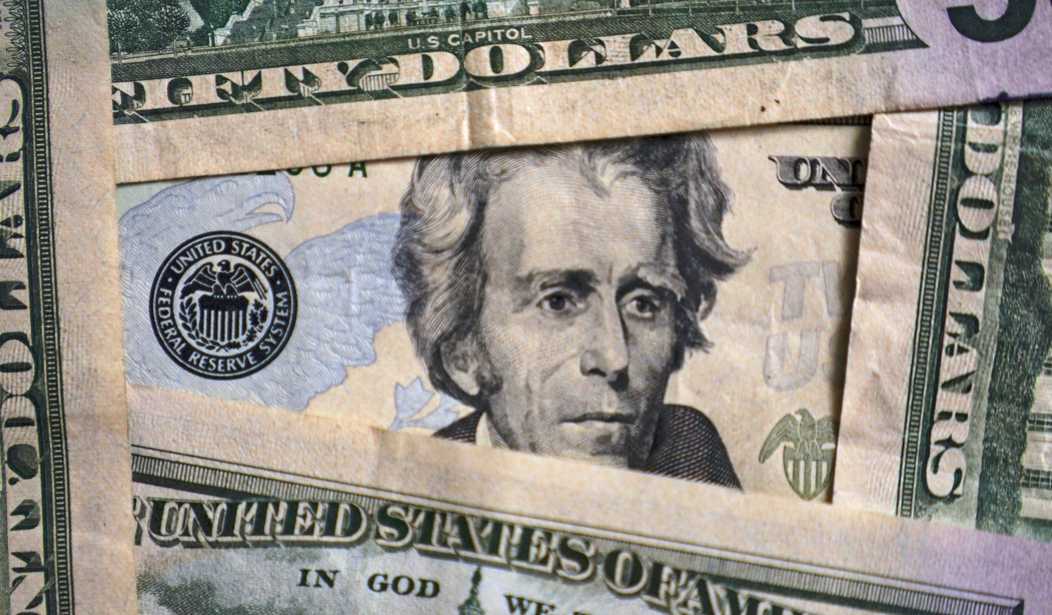President Joe Biden has been in office a little more than 21 months, but during that brief period he has managed to increase the federal debt by more than $3.4 trillion.
On Jan. 20, 2021, the day Biden was inaugurated, the total federal debt was $27,751,896,236,414.77, according to the Treasury.
On Oct. 31, 2022, the latest day for which the numbers have been published, the total federal debt was $31,238,301,149,359.52.
That equals an increase of $3,486,404,912,944.75.
How does one put that in perspective?
Well, in 2019, the last year for which the Internal Revenue Service has published its Statistics of Income report, Americans filed 104,005,800 "taxable returns" with the IRS.
"A taxable return," the IRS explains in its Statistics of Income Bulletin, "is a return on which the taxpayer reports total income tax greater than zero dollars."
Thus, there were 104,005,800 income taxpayers in the United States as of 2019; and, in Biden's first approximately 21 months in office, the increase in the federal debt of $3,486,404,912,944.75 equaled approximately $33,521.25 per each of those taxpayers.
What could that amount of money pay for -- other than a bigger federal government?
It could, for example, go a long way toward putting your child through college.
In the 2022-23 school year, according to U.S. News & World Report, a student should expect to pay $10,423 in tuition and fees to attend a U.S. News-ranked in-state public college. A ranked out-of-state public college would cost $22,953, and a ranked private college would cost $39,723.
In other words, the $33,521.25 that the Biden administration had borrowed per taxpayer as of Oct. 31 would pay for more than three years at a ranked in-state public college (at the current rate) and almost a year and a half at a ranked out-of-state public college.
Recommended
It would also cover more than 84% of the average annual tuition and fees at a ranked private college.
Has the $33,521.25 that the Biden administration has borrowed per taxpayer given you anything worth as much as a year (or three) in college?
In fiscal 2022 alone, the debt increased by $2,499,993,043,258.05. What did the federal government spend money on as it drove toward that remarkable increase in the debt?
Well, it spent $639,368,000,000, for example, on the Department of Education -- in a year when only 33% of public school fourth graders and 31% of public school eighth graders scored proficient or better in reading in the National Assessment of Educational Progress tests.
Similarly, only 36% of public school fourth graders and only 26% of public school eighth graders scored proficient or better in math.
Those scores may qualify these students to work in the Biden Office of Management and Budget, but they do not justify the federal government's massive spending on local public education while running up a massive debt.
Perhaps more remarkable than the massive increase in its debt that federal government accumulated in the last fiscal year is the fact that it did so while extracting a record amount of taxes from the American people.
During fiscal 2022, according to the Treasury, the federal government collected $4,896,119,000,000 in total federal taxes. That was $518,302,170,000 more in constant September 2022 dollars than the federal government collected in fiscal 2021, when it brought in a then-record $4,377,816,830,000 in total taxes.
But while the federal government was collecting a record $4,896,119,000,000 in total taxes in fiscal 2022, it was spending $6,271,508,000,000. The result: a fiscal 2022 federal deficit of $1,375,389,000,000.
During that one year alone, the federal government borrowed approximately $13,224.15 for each of the 104,005,800 in income-taxpaying households that existed in this country as of 2019.
Does Biden plan to do anything about this?
In the budget proposal he submitted to Congress earlier this year, Biden called for running a deficit of $1,153,856,000,000 in fiscal 2023, which has just begun. He would then follow that up with annual deficits of $1,200,805,000,000 in fiscal 2024 and $1,329,707,000,000 in fiscal 2025.
Biden's plan for the debt, in other words, is to continue increasing it by more than $1 trillion per year.
In a week, Americans will vote for every member of the next House of Representatives and for one-third of the next Senate.
Has the massive and growing federal debt been a significant issue for the candidates seeking those offices?
It will be the legacy they leave your children and grandchildren.



















Join the conversation as a VIP Member